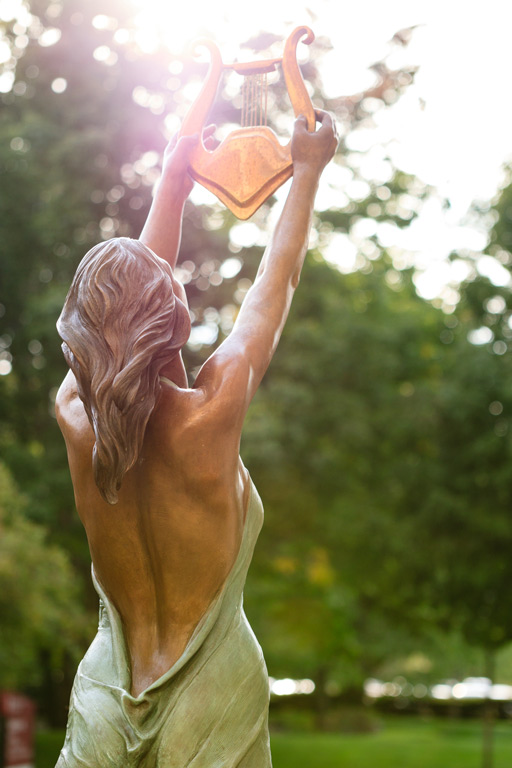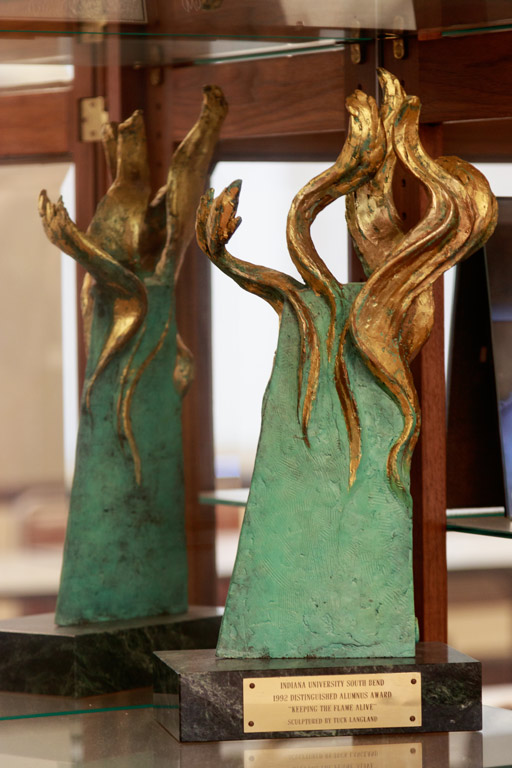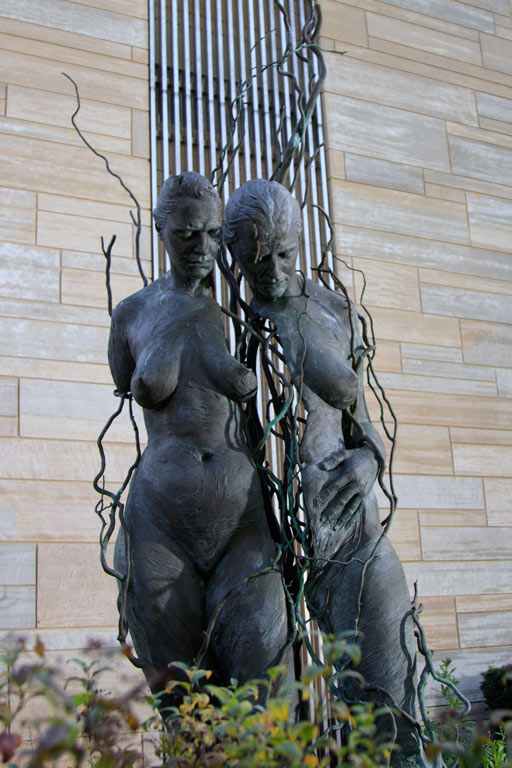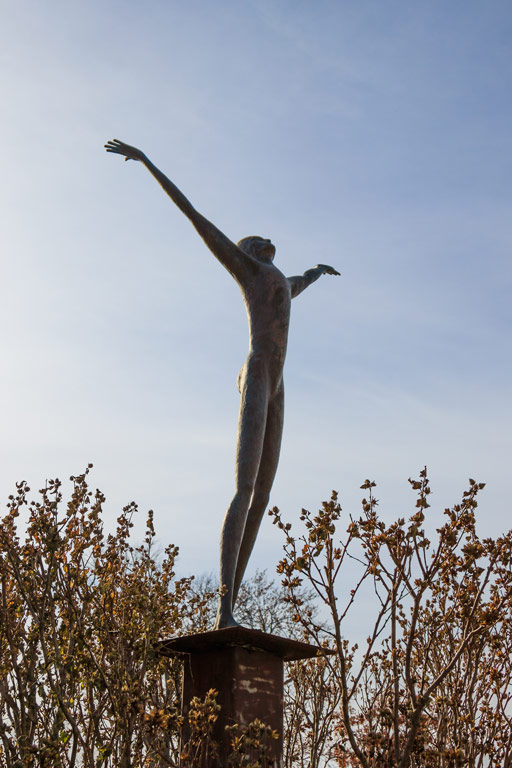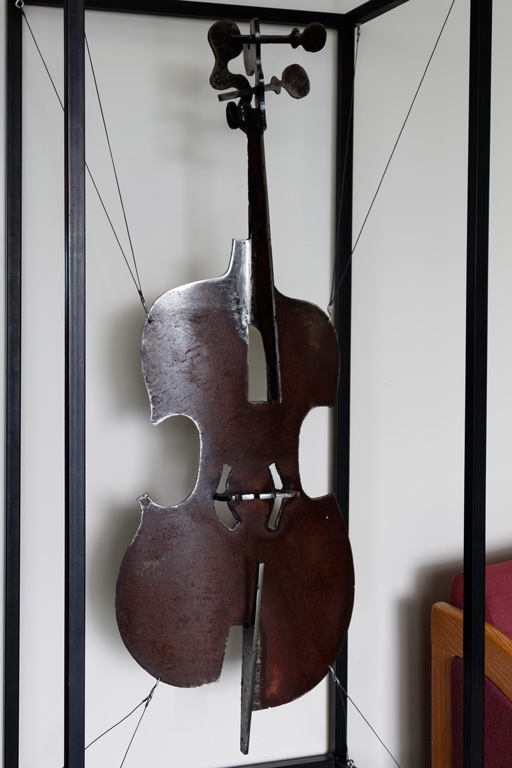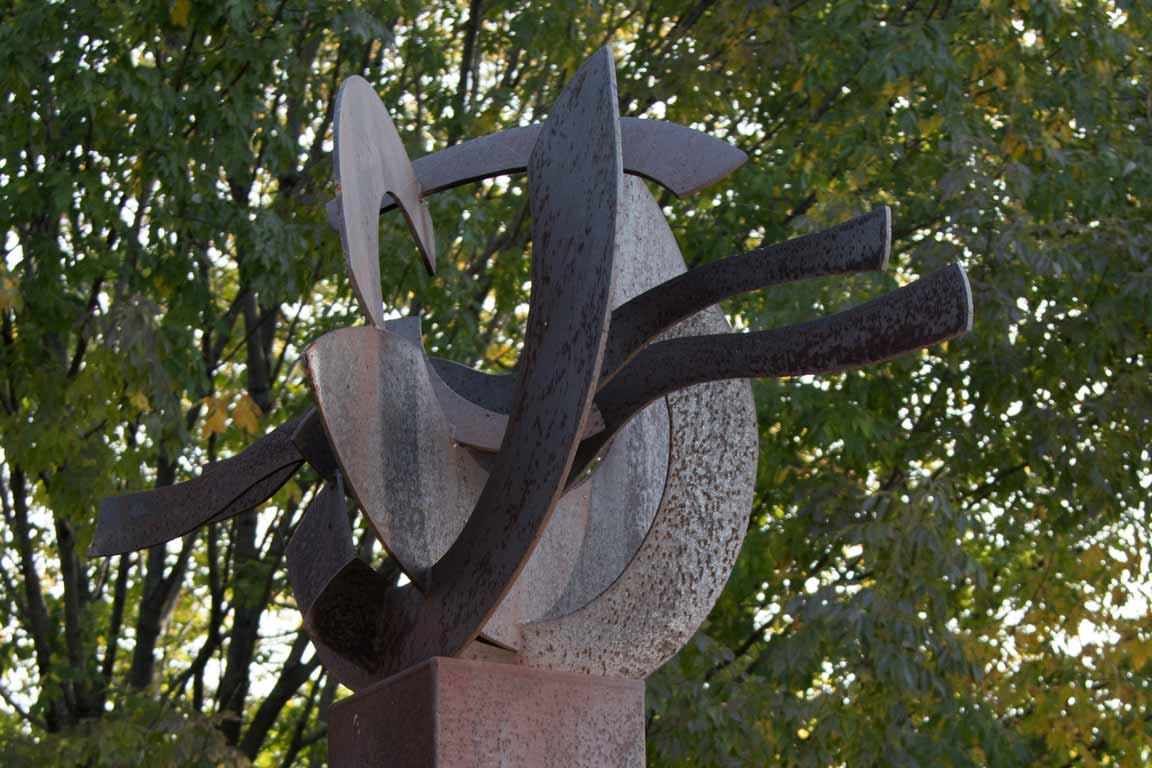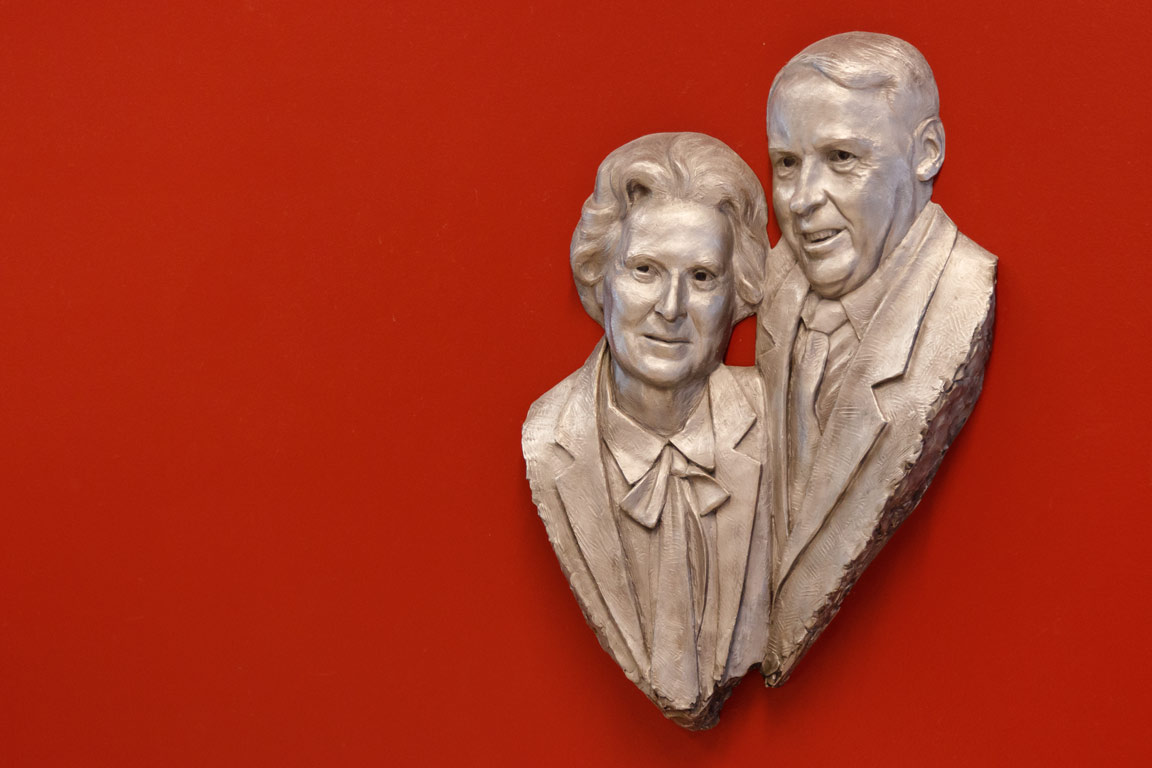IU South Bend’s impressive array of public art is no coincidence. It began with Chancellor Emeritus Lester Wolfson’s vision to build a campus rich in the arts as well as the humanities. Looking for a strong community leader in the arts, he hired Howard Zisla, who was the director of the South Bend Arts Center at the time, to chair the Department of Fine Arts. In turn, Zisla hired sculptor Tuck (Harold) Langland to build the sculpture program at IU South Bend. Zisla and Langland shared an inspiration to make IU South Bend one of the best figurative art departments in the area at a time when conceptual art was the trend.
The fine arts department was small with only a few full-time faculty, so Langland hired visiting professors from around the world to expand and teach new techniques, exposing students to a variety of methods and cultures. Moreover, Langland became a well-known figure sculptor in his own right, showcasing his installations and winning awards around the world. During his 30- year tenure at IU South Bend, Langland succeeded in building IU South Bend’s reputation for figurative art and added significantly to its collection of public art. Today, the campus boasts eight pieces sculpted by Langland.





